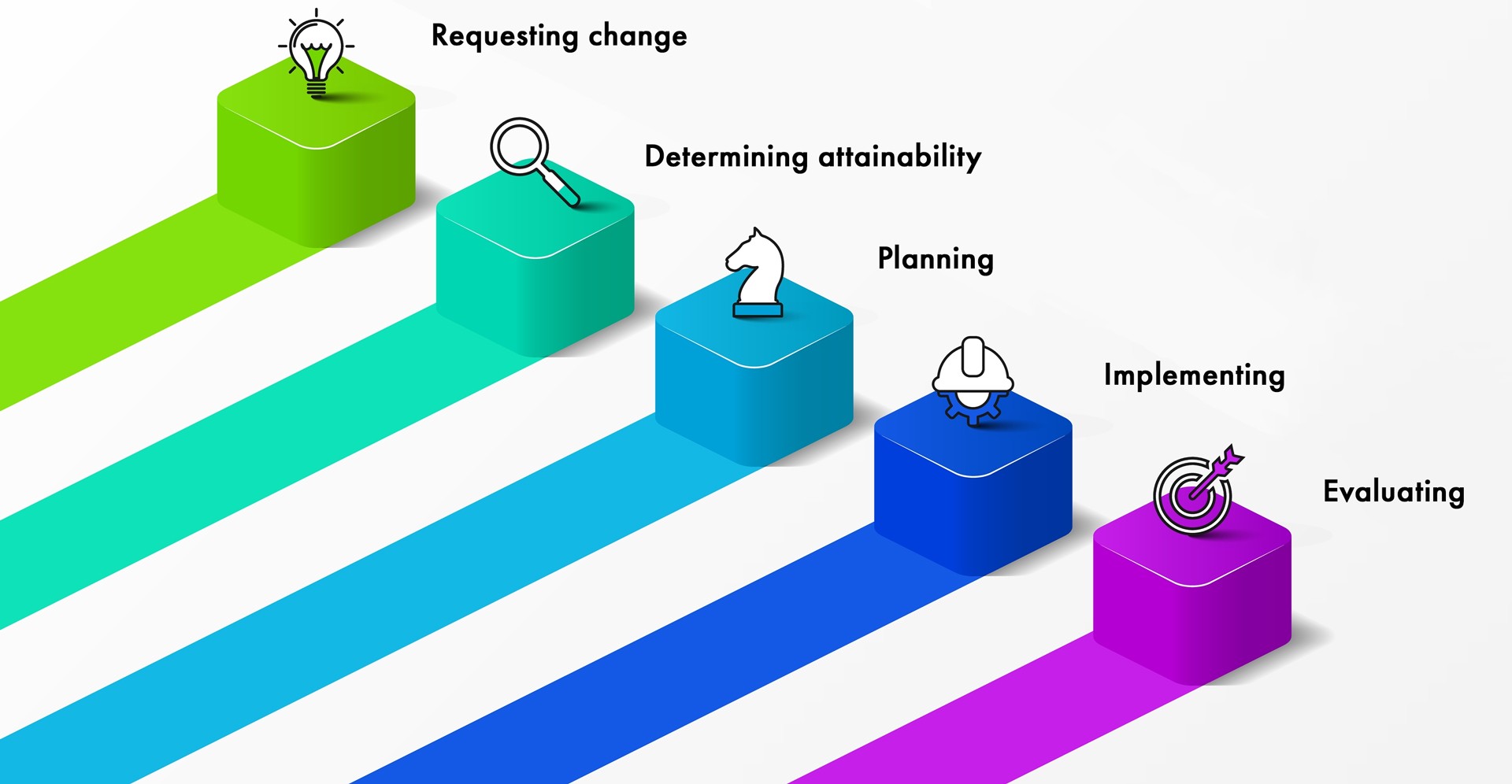The Five Pillars of Change Management in Manufacturing

The manufacturing environment is always changing. Certain processes and procedures remain constant as factory governance frameworks, but within those frameworks much remains subject to change. Ideally, changes begin with a formal change request and progress through an established change management process.
Change management is a critical part of factory operations. To handle change effectively and efficiently, manufacturers need to know the five core pillars of change management.
💡 Requesting change
Change requests are a common feature of the factory environment used to improve operations or revise product designs. Reasons for change requests include development of better technologies, insightful research results, and evolving peripheral factors. Change requests may be proactive or reactive.
Established management procedures — beginning with a formal request — ease the stress associated with change in the manufacturing space. Change requests provide stakeholders with essential information regarding what is changing and why and act as an official starting point for product and/or process revisions.
🔎 Determining attainability
Before implementing changes, manufacturers must determine if they are advisable and/or attainable. Your stakeholders are a ready team of affected staff members whose input is relevant to the requested change and valuable to your decision-making process. Discuss the pros and cons of changes with these stakeholders, and include the employee(s) who originated the formal request.
After gathering all relevant information, discuss the practical implications of making a change, and develop realistic expectations for outcomes. Determining attainability early in the process prevents irresponsible or ill-advised changes.
♞ Planning
Once attainability is determined, your team can begin planning for implementation. Create a step-by-step plan to bring about the desired result. Specific steps will vary, but a sound plan typically includes formally requesting relevant materials and information, determining the benefits of making the change, and delegating tasks to those who will implement it. Mapping out details turns your concept into a reality.
⚙️ Implementing
Implementation can begin once you’ve accounted for all the necessary resources. For most change requests, requirements include money, time, staff cooperation, and risk management. With all the pieces in place, manufacturers can implement changes with relative ease.
🎯 Evaluating
The final step in change management involves testing and evaluating the efficiency of the result. Formal evaluation with established performance metrics will determine whether — and how well — a change is working. Results should meet the expectations of everyone involved and allow for scalability and continuous improvement.
Change is disruptive by nature — especially when it deviates from an ingrained routine. The key to a successful result is a comprehensive change management process. Follow the five core pillars to manage change with a linear, measured, and traceable methodology for positive, verifiable results.
